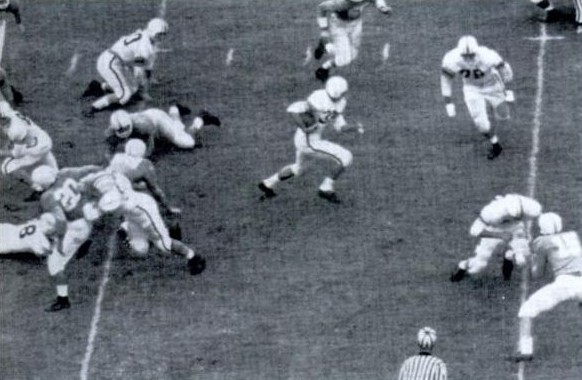


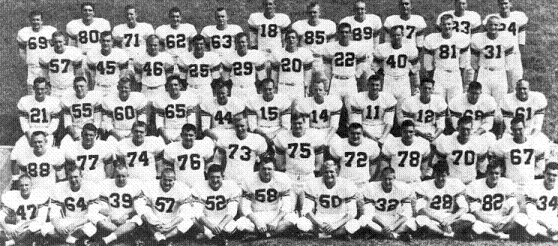
| at Tennessee (8-3) | 7-0 | #11 |
| Tennessee-Chattanooga (4-5-1) | 40-7 | |
| Kentucky (3-7) | 6-0 | |
| at Georgia Tech (4-4-2) | 3-0 | |
| at Houston (5-4-1) | 48-7 | |
| Florida (6-2-1) | 13-0 | #24 |
| (Birmingham) Mississippi State (6-2-1) | 15-7 | #10 |
| (Columbus) Georgia (3-7) | 6-0 | |
| at Florida State (4-6) | 29-7 | |
| (Birmingham) Alabama (2-7-1) | 40-0 |
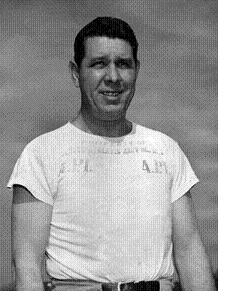
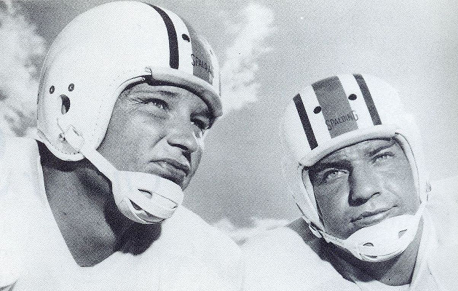
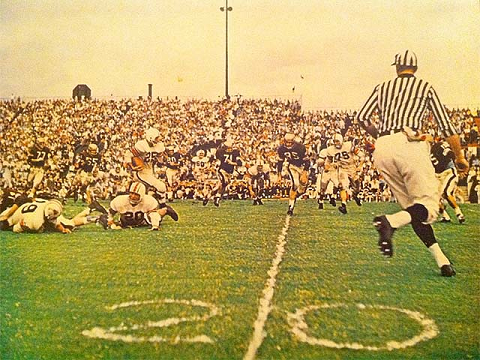
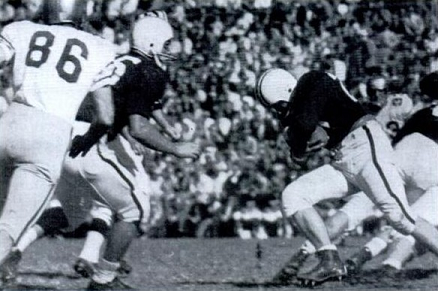
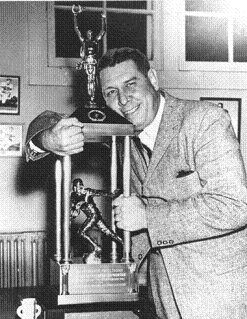
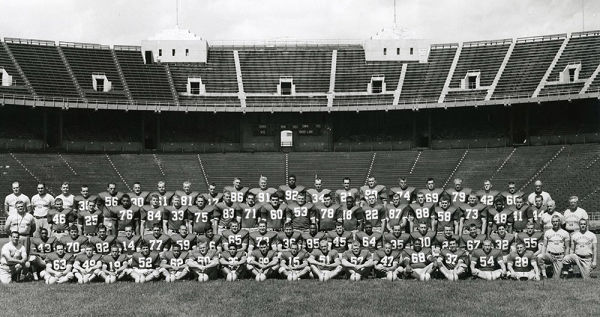
| Texas Christian (5-4-1) | 14-18 | #22 |
| at Washington (3-6-1) | 35-7 | |
| Illinois (4-5) | 21-7 | |
| Indiana (1-8) | 56-0 | |
| at Wisconsin (6-3) | 16-13 | #12 |
| Northwestern (0-9) | 47-6 | |
| Purdue (5-4) | 20-7 | #23 |
| Iowa (7-1-1) | 17-13 | #4 |
| at Michigan (5-3-1) | 31-14 | #25 |
| Rose Bowl Oregon (7-4) | 10-7 |
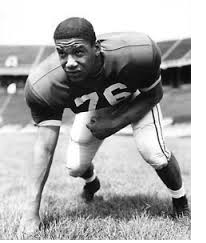 Ohio State had last won a mythical national championship in 1954,
and I covered their Hall of Fame coach, Woody Hayes, in the linked
article. This year's team didn't really have any star players, but Ohio State fielded
more future Hall of Famers than did Auburn and Michigan State combined.
Ohio State had last won a mythical national championship in 1954,
and I covered their Hall of Fame coach, Woody Hayes, in the linked
article. This year's team didn't really have any star players, but Ohio State fielded
more future Hall of Famers than did Auburn and Michigan State combined.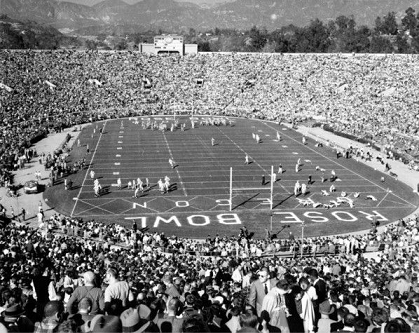
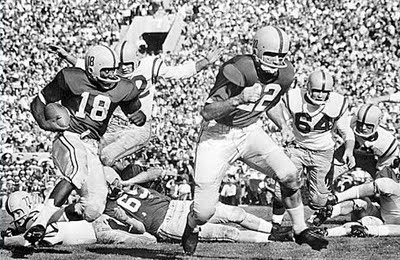
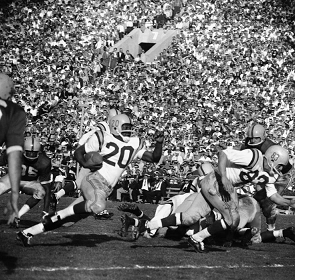
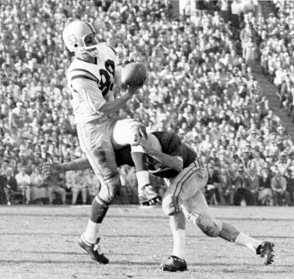
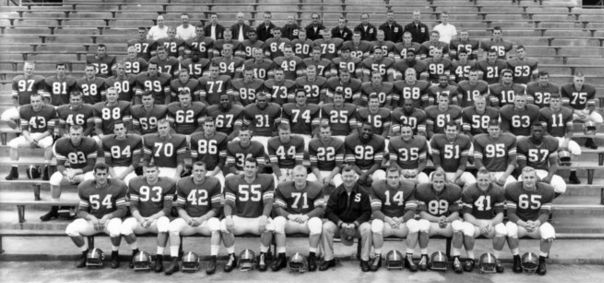
| Indiana (1-8) | 54-0 | |
| at California (1-9) | 19-0 | |
| at Michigan (5-3-1) | 35-6 | #25 |
| Purdue (5-4) | 13-20 | #23 |
| Illinois (4-5) | 19-14 | |
| at Wisconsin (6-3) | 21-7 | #12 |
| Notre Dame (7-3) | 34-6 | #7 |
| Minnesota (4-5) | 42-13 | |
| Kansas State (3-6-1) | 27-9 |
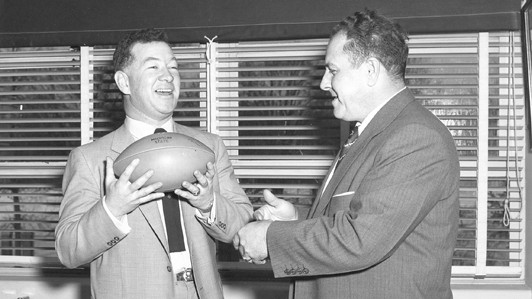
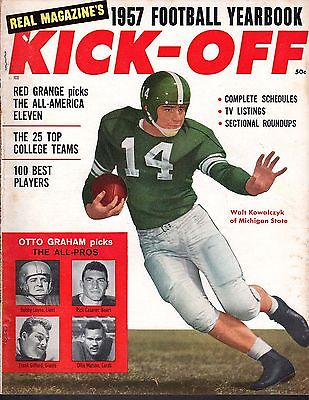
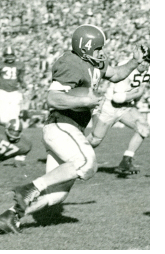 Michigan State
ate a couple of cupcakes to start the season, rolling 54-0
over Indiana (1-8) and 19-0 at California (1-9). MSU was
rated #2 and Michigan #6 as the Spartans headed to Ann Arbor, but they found little
trouble there, scoring 3 touchdowns in the 4th quarter to hammer their archrival
35-6. Michigan did not end up having a good season, but they did manage
to tie Iowa (7-1-1, #4), finishing 5-3-1 and ranked #25.
Michigan State
ate a couple of cupcakes to start the season, rolling 54-0
over Indiana (1-8) and 19-0 at California (1-9). MSU was
rated #2 and Michigan #6 as the Spartans headed to Ann Arbor, but they found little
trouble there, scoring 3 touchdowns in the 4th quarter to hammer their archrival
35-6. Michigan did not end up having a good season, but they did manage
to tie Iowa (7-1-1, #4), finishing 5-3-1 and ranked #25.| Auburn 10-0 | Ohio State 9-1 | Michigan State 8-1 | ||||||||||||||||||||||||||||||||||||||||||||||||||||||
|---|---|---|---|---|---|---|---|---|---|---|---|---|---|---|---|---|---|---|---|---|---|---|---|---|---|---|---|---|---|---|---|---|---|---|---|---|---|---|---|---|---|---|---|---|---|---|---|---|---|---|---|---|---|---|---|---|
|
|
|
||||||||||||||||||||||||||||||||||||||||||||||||||||||
| 1) National Championship Foundation | 4.84 |
| 2) DeVold
(math system) | 4.78 |
| 3) Billingsley (math) | 4.77 |
| 4) Poling
(math) |
4.56 |
| 5)
College
Football Researchers Association |
4.55 |
| 6) Houlgate (math) | 4.53 |
| 7) Dunkel (math) | 4.45 |
| 8) Sagarin-ELO (math) | 4.29 |
| 9) AP Poll | 4.28 |
| 10) Sagarin (math) | 4.22 |
| 11) Litkenhous
(math) | 4.20 |
| 12) Helms Foundation | 4.18 |
| 13) Boand (math) | 4.17 |
| 14) Williamson (math) | 3.79 |
| 15) Berryman (math) | 3.29 |
| 1) Boand (math system) | 4.26 |
| 2) College Football Researchers Association | 4.22 |
| 3) Poling (math) | 4.11 |
| 4) Helms | 4.09 |
| 5) Sagarin-ELO (math) | 4.06 |
| 6) National Championship Foundation | 3.96 |
| 7) Dickinson (math) | 3.49 |
| 8) Houlgate (math) | 3.35 |
| 9) Billingsley (math) | 3.34 |
| 10) Sagarin (math) | 3.28 |
| 11) Parke Davis | 2.77 |
| 1) Houlgate (math system) | 4.5 |
| 2) Helms | 4.3 |
| 3) Parke Davis | 4.2 |
| 4) National Championship Foundation | 3.7 |
| 5) Billingsley (math) | 3.6 |